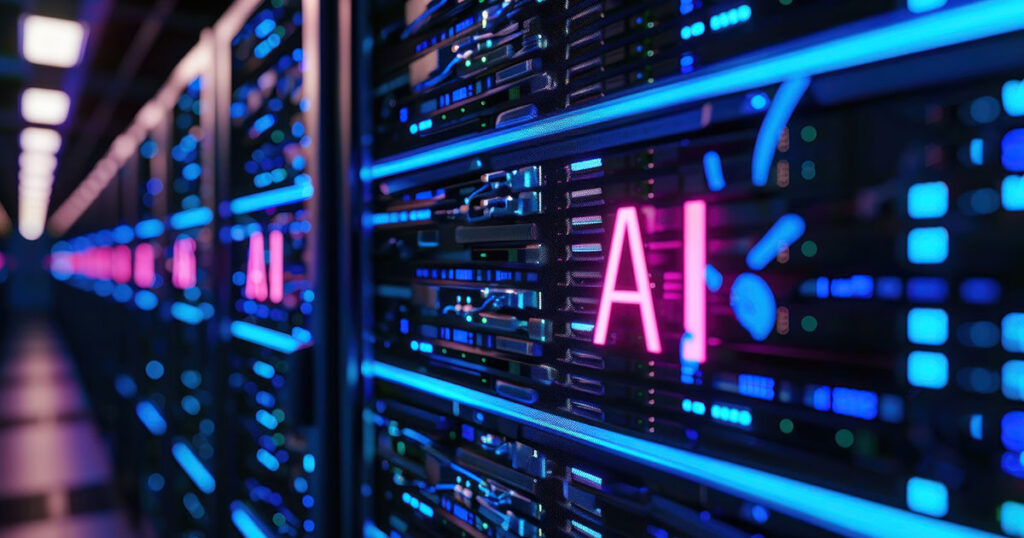The Unique Challenges of AI Racks
AI racks are designed for maximum compute performance but come with equally high demands for power and cooling. Unlike standard server racks, they often exceed 30 to 80 kW per rack, which is significantly higher than legacy systems. These racks are not just hotter; they are more sensitive, with dozens of sensors spread across GPUs, CPUs, CDUs, and cooling loops.Key differences in AI rack architecture:
- Each rack may contain multiple GPUs, each generating significant heat and drawing substantial power.
- Cooling solutions are often hybrid or entirely liquid-based, involving Coolant Distribution Units (CDUs), pressure sensors, and flow meters.
- Devices across the rack communicate using many protocols such as SNMP, Modbus, IPMI, Redfish, and others, making it harder to get a unified view without the right platform.
Key Monitoring Points Across an AI Rack
Power Monitoring Needs
- Rack-level PDUs and Uninterruptible Power Supplies (UPSs) must be tracked continuously.
- Per-outlet metering allows insight into power draw at each node.
- Remote switching and circuit-level health are vital to prevent localized overloads.
Thermal Monitoring Points
- Temperature and humidity sensors mounted inside the rack help monitor local environmental conditions.
- Liquid cooling adds another layer, making it critical to monitor flow rates, coolant pressure, and inlet and outlet temperatures.
Node-Level Metrics
- Each GPU and CPU has internal sensors for temperature, power draw, and clock speed.
- Utilization rates and signs of throttling need real-time visibility to ensure performance stays consistent under load.
Integration Complexity
- There are dozens of device types, each with its own protocol and data format, which creates monitoring silos.
- Without a unified system to tie everything together, failures may go unnoticed until they cause significant damage.
What’s Needed for Real AI Rack Monitoring
To truly protect and optimize AI racks, a DCIM platform must go beyond logging power and temperature data. It must connect the dots across a complex, fast-moving system.A capable platform must offer:
- Real-time monitoring with alerts that trigger on power anomalies, thermal spikes, or fluid flow issues.
- Compatibility with both open and proprietary protocols to ensure broad device coverage.
- Scalability to handle growth, whether it is more AI racks in one hall or expansion across multiple locations.
Why older tools do not work:
- They cannot correlate data across power, cooling, and compute
- Many lack node-level insight, which is essential for identifying problems inside individual GPUs or CPUs.
- Few tools track liquid cooling metrics like flow rate or coolant pressure, which are critical in AI rack environments.
Monitoring goals must include:
- Prevent damage from overheating through proactive alerting.
- Ensuring uptime and maximizing the availability of high-cost compute
- Managing rack-level capacity for both power and thermal headroom to plan for future growth.
Why Modius OpenData Is Built for AI-Scale Infrastructure
Modius OpenData is a purpose-built DCIM platform that provides intelligent, scalable monitoring for AI racks. Its unified data model, real-time insights, and flexible architecture help data center operators meet the demands of modern compute environments.Unified Data Integration
- OpenData collects from PDUs, CDUs, sensors, servers, and many other device types.
- It supports virtual rack modeling to aggregate metrics from different devices into one logical view.
- The platform works with a wide range of protocols and APIs, with new ones added regularly to keep up with industry changes.
Scalable Architecture
- Distributed collectors allow OpenData to scale across large or geographically dispersed data centers.
- Local data collection improves system resilience and enhances data security.
- Edge processing reduces network traffic and improves real-time responsiveness.
Smart Monitoring and Alerting
- Users can define custom alarm rules for any measurable point, such as GPU temperature, liquid flow rate, or power draw.
- Real-time dashboards give operators live views of rack health, while historical trends help detect emerging issues.
- Alarm thresholds and escalation rules are flexible and ensure the right people respond quickly to the right problems.
Operational Advantages
- Response times are reduced during critical events because all data is unified in one view.
- Better decision-making is possible with a full understanding of rack-level health, power use, and thermal conditions.
- Operators can plan proactively for capacity needs, system expansion, or load balancing.
The Cost of Silence: Don’t Let AI Racks Go Dark
AI racks are powerful systems, but they are fragile without constant oversight. With their high density, fast-changing workloads, and sensitive thermal thresholds, they require more than legacy monitoring tools can deliver. A modern DCIM platform such as Modius OpenData provides essential visibility and control. It becomes the operational backbone of your AI environment, enabling data center teams to respond faster, work smarter, and avoid costly downtime. Now is the time to evaluate your current tools. Are they giving you full insight into power usage, thermal conditions, and compute node health? If not, consider moving to a unified solution designed specifically for the challenges of AI infrastructure. Request a Free Trial of OpenData today. We are passionate about empowering our clients to run more profitable data centers while providing unmatched visibility into operational data. Modius has been delivering DCIM solutions since 2007. We are based in San Francisco, are proudly certified for ISO/IEC 27001 and are a Veteran-Owned Small Business (VOSB). Contact us at sales@modius.com or (888) 323.0066 to learn more.About the author

Meet Will Straus, Lead Integration Engineer at Modius®, who has worked with the company since 2013. With over a decade of experience in the data center industry, Will specializes in infrastructure monitoring and hardware integration. He thrives on solving complex problems that don’t have ready-made solutions, often building custom tools and systems from the ground up. Will has witnessed DCIM shift from a “nice-to-have” tool into a critical platform for managing efficiency, uptime, and capacity. He believes the next evolution will be driven by AI, global visibility across distributed data centers, and the transition from monitoring to orchestration. His focus is on improving integration and usability, connecting Modius® OpenData® to more systems and simplifying how users interact with complex information. Will is especially drawn to the way OpenData enables transparent data collection, powerful analytics, and real-time dashboards that bring critical insights together in one place. Outside of work, Will enjoys hands-on creative projects like woodworking, building electronic gadgets, and home improvement. He also makes time for running or swimming, depending on the weather.

